Foreword by Dr. Deepak Gupta
Foreword by Dr. Jose Antonio Marmolejo-Saucedo and Dr. Igor Litvinchev
Preface
About This Book
Contents
utkukose@sdu.edu.tr
bogdan@info.uaic.ro
1 Artificial Intelligence and Decision Support Systems
1.1 Artificial Intelligence and Intelligent Systems
1.1.1 Areas of Artificial Intelligence
1.1.2 Intelligent Systems
1.2 Decision Support Systems
1.2.1 Decision Support Systems for Medical and Deep Learning
1.3 Summary
1.4 Further Learning
References
2 Deep Learning Architectures for Medical Diagnosis
2.1 Deep Learning for Medical Diagnosis
2.2 Deep Learning Architectures
2.2.1 Convolutional Neural Networks
2.2.2 Recurrent Neural Networks
2.2.3 Autoencoder Neural Network
2.2.4 Deep Neural Networks
2.2.5 Deep Belief Network
2.2.6 Deep Reinforcement Learning
2.2.7 Other Deep Learning Architectures
2.3 Summary
2.4 Further Learning
References
3 A Brief View on Medical Diagnosis Applications with Deep Learning
3.1 Convolutional Neural Networks Applications
3.2 Recurrent Neural Networks Applications
3.3 Autoencoder Neural Network Applications
3.4 Deep Neural Network Applications
3.5 Deep Belief Network Applications
3.6 Deep Reinforcement Learning Applications
3.7 Applications with Other Deep Learning Architectures
3.8 Summary
3.9 Further Learning
References
4 Diagnosing Diabetic Retinopathy by Using a Blood Vessel Extraction Technique and a Convolutional Neural Network
4.1 Related Works
4.2 Materials and Methods
4.2.1 Messidor Dataset
4.2.2 Image Processing
4.2.3 Classification with Convolutional Neural Network
4.2.4 Evaluation of Performance
4.3 Diagnosis Application
4.4 Results and Discussion
4.5 Summary
4.6 Further Learning
References
5 Diagnosing Parkinson by Using Deep Autoencoder Neural Network
5.1 Related Works
5.2 Materials and Methods
5.2.1 The Dataset of Oxford Parkinson’s Disease Diagnosis
5.2.2 Classification
5.2.3 Evaluating the Performance
5.3 Classification Application
5.4 Results and Discussion
5.5 Summary
5.6 Further Learning
References
6 A Practical Method for Early Diagnosis of Heart Diseases via Deep Neural Network
6.1 Fundamentals
6.1.1 Cleveland Heart Disease Data Set
6.1.2 Autoencoder Neural Network
6.1.3 Performance Evaluation
6.2 Early Diagnosis of Heart Diseases
6.3 Results and Discussion
6.4 Summary
6.5 Further Learning
References
7 A Hybrid Medical Diagnosis Approach with Swarm Intelligence Supported Autoencoder Based Recurrent Neural Network System
7.1 Related Work
7.2 Swarm Intelligence and Autoencoder Based Recurrent Neural Network for Medical Diagnosis
7.2.1 Autoencoder Based Recurrent Neural Network (ARNN)
7.2.2 Swarm Intelligence and Intelligent Optimization in the SIARNN
7.3 Design of the SIARNN
7.4 Applications and Evaluation
7.4.1 Medical Diagnosis Applications with SIARNN
7.4.2 Comparative Evaluation
7.5 Results and Future Work
7.6 Summary
7.7 Further Learning
References
8 Psychological Personal Support System with Long Short Term Memory and Facial Expressions Recognition Approach
8.1 Background
8.1.1 Facial Recognition and Facial Expressions
8.1.2 Long Short Term Memory
8.2 The Model of the Psychological Personal Support System
8.2.1 Infrastructure for Facial Expressions
8.2.2 Long Short Term Memory Based Approach for Psychological Testing Process
8.2.3 API Mechanism
8.3 Evaluation
8.4 Results and Discussion
8.5 Summary
8.6 Further Learning
References
9 Diagnosing of Diabetic Retinopathy with Image Dehazing and Capsule Network
9.1 Materials and Method
9.1.1 Kaggle Diabetic Retinopathy Database for Diagnosis
9.1.2 Image Processing
9.1.3 Classification
9.1.4 Evaluation of the Diagnosis
9.2 Application and Evaluation
9.3 Results
9.4 Summary
9.5 Further Learning
References
10 Future of Medical Decision Support Systems
10.1 Internet of Health Things and Wearable Technologies
10.2 Robotics
10.3 Information and Drug Discovery
10.4 Rare Disease and Cancer Diagnosis
10.5 COVID-19 and Pandemics Control
10.6 Summary
10.7 Further Learning
References

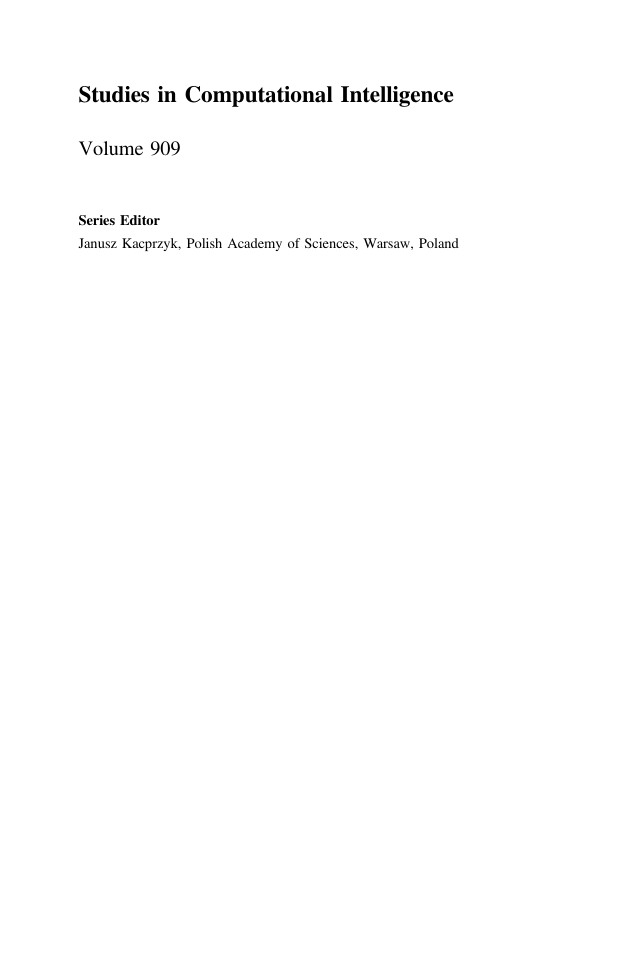
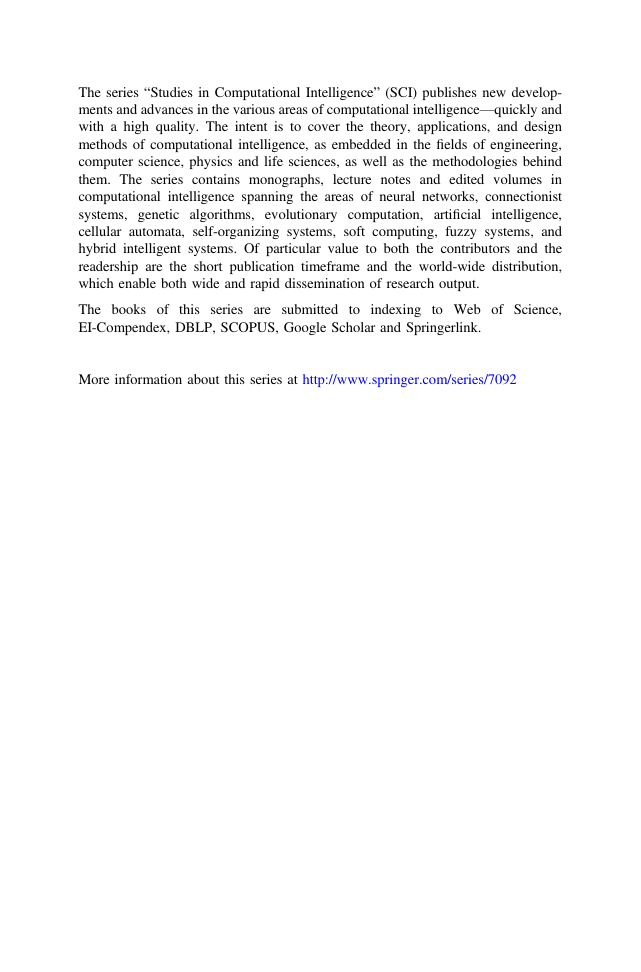
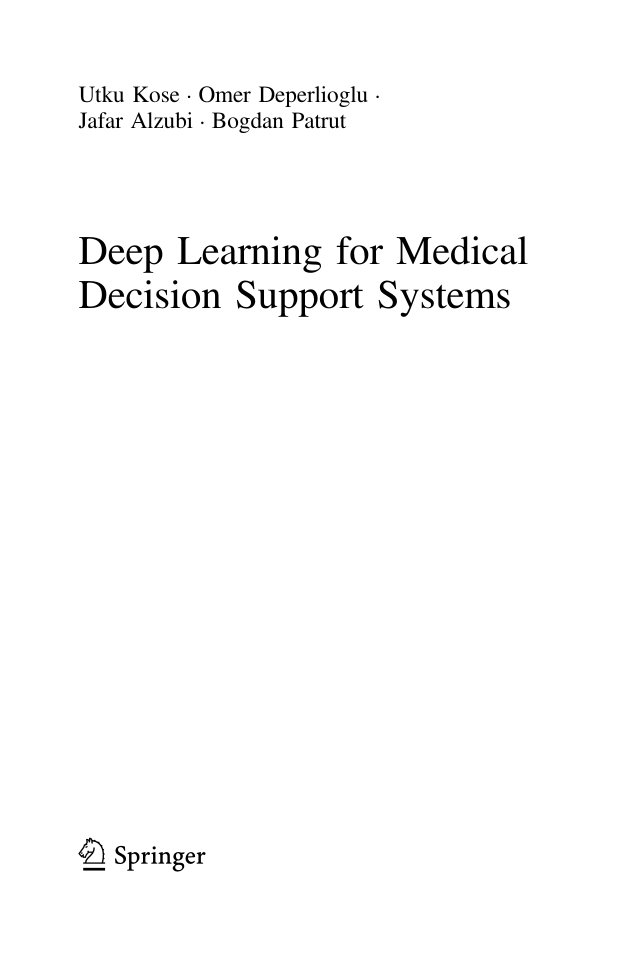
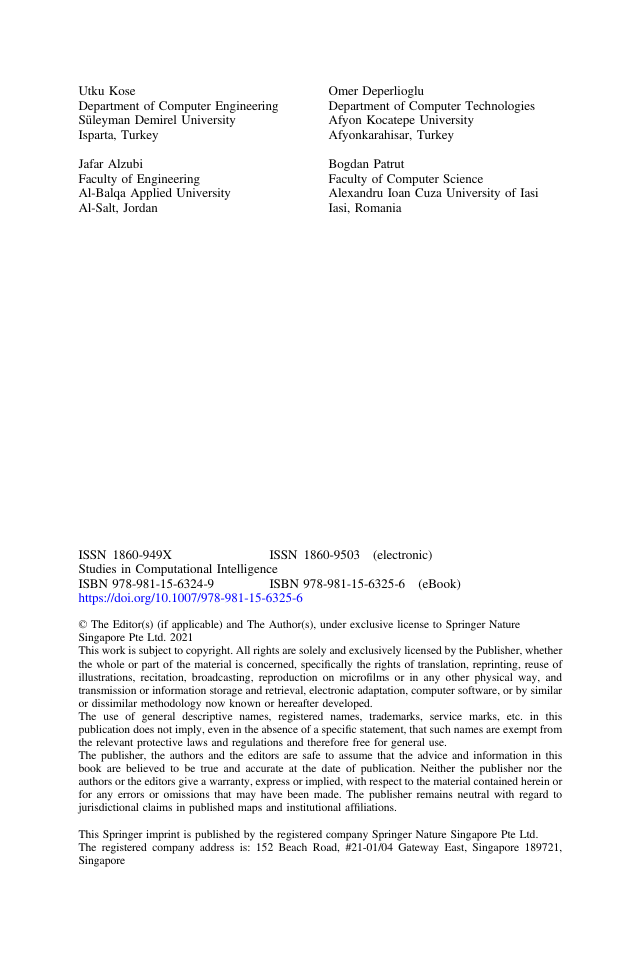
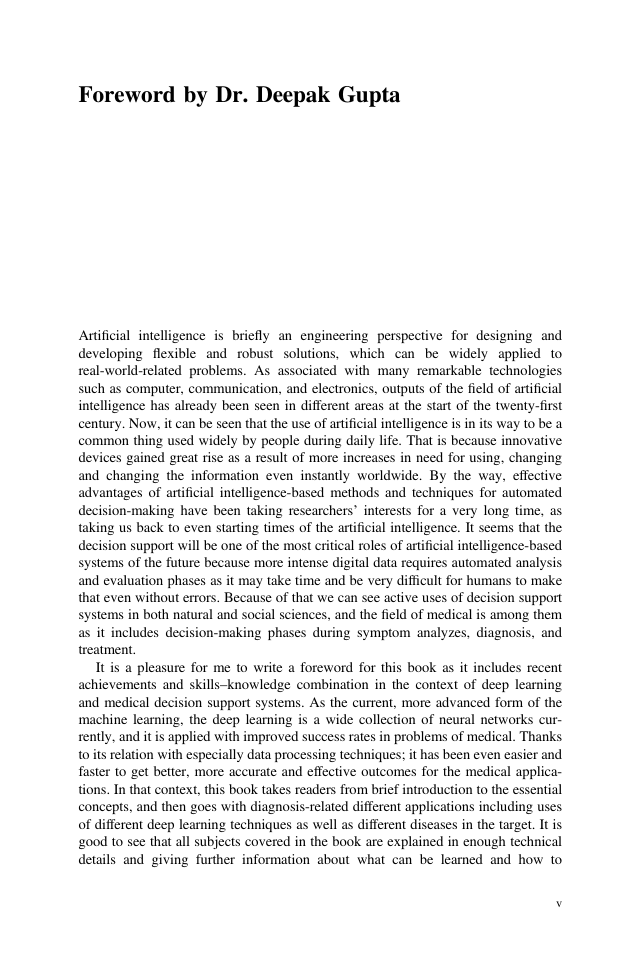

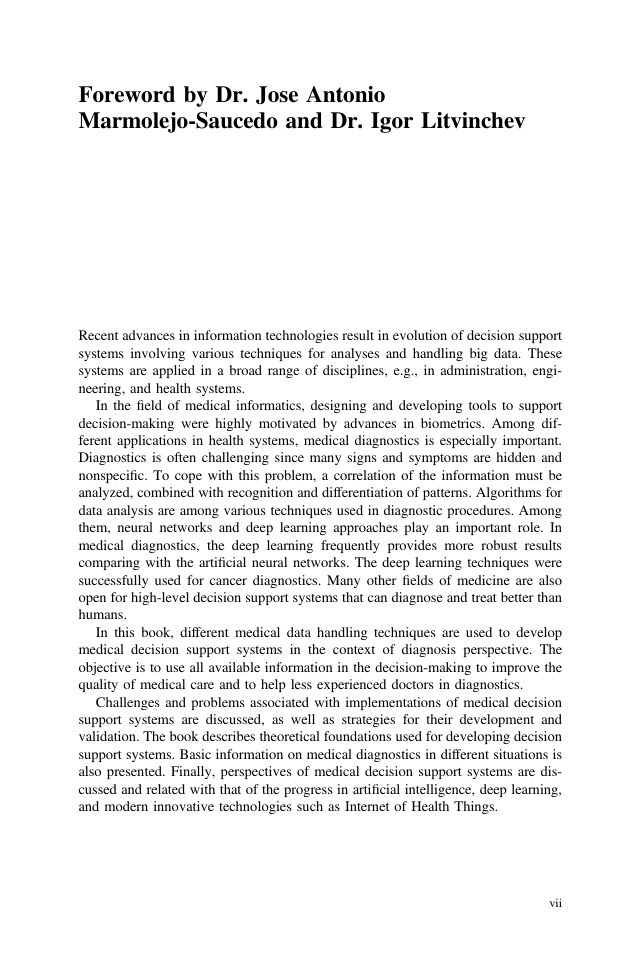








 2023年江西萍乡中考道德与法治真题及答案.doc
2023年江西萍乡中考道德与法治真题及答案.doc 2012年重庆南川中考生物真题及答案.doc
2012年重庆南川中考生物真题及答案.doc 2013年江西师范大学地理学综合及文艺理论基础考研真题.doc
2013年江西师范大学地理学综合及文艺理论基础考研真题.doc 2020年四川甘孜小升初语文真题及答案I卷.doc
2020年四川甘孜小升初语文真题及答案I卷.doc 2020年注册岩土工程师专业基础考试真题及答案.doc
2020年注册岩土工程师专业基础考试真题及答案.doc 2023-2024学年福建省厦门市九年级上学期数学月考试题及答案.doc
2023-2024学年福建省厦门市九年级上学期数学月考试题及答案.doc 2021-2022学年辽宁省沈阳市大东区九年级上学期语文期末试题及答案.doc
2021-2022学年辽宁省沈阳市大东区九年级上学期语文期末试题及答案.doc 2022-2023学年北京东城区初三第一学期物理期末试卷及答案.doc
2022-2023学年北京东城区初三第一学期物理期末试卷及答案.doc 2018上半年江西教师资格初中地理学科知识与教学能力真题及答案.doc
2018上半年江西教师资格初中地理学科知识与教学能力真题及答案.doc 2012年河北国家公务员申论考试真题及答案-省级.doc
2012年河北国家公务员申论考试真题及答案-省级.doc 2020-2021学年江苏省扬州市江都区邵樊片九年级上学期数学第一次质量检测试题及答案.doc
2020-2021学年江苏省扬州市江都区邵樊片九年级上学期数学第一次质量检测试题及答案.doc 2022下半年黑龙江教师资格证中学综合素质真题及答案.doc
2022下半年黑龙江教师资格证中学综合素质真题及答案.doc